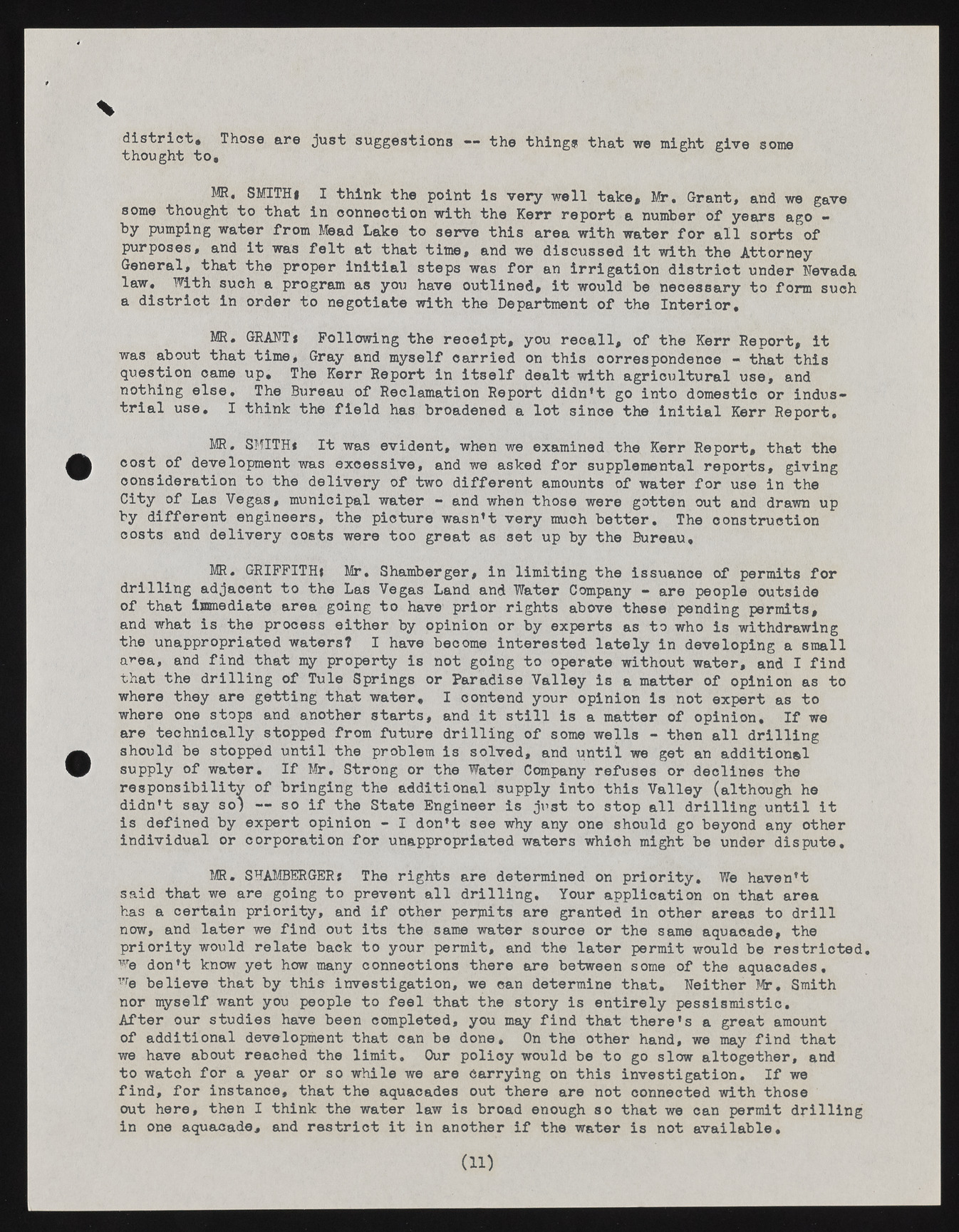Copyright & Fair-use Agreement
UNLV Special Collections provides copies of materials to facilitate private study, scholarship, or research. Material not in the public domain may be used according to fair use of copyrighted materials as defined by copyright law. Please cite us.
Please note that UNLV may not own the copyright to these materials and cannot provide permission to publish or distribute materials when UNLV is not the copyright holder. The user is solely responsible for determining the copyright status of materials and obtaining permission to use material from the copyright holder and for determining whether any permissions relating to any other rights are necessary for the intended use, and for obtaining all required permissions beyond that allowed by fair use.
Read more about our reproduction and use policy.
I agree.Information
Digital ID
Permalink
Details
More Info
Rights
Digital Provenance
Publisher
Transcription
% district. Those are just suggestions ~ the things that we might give some thought to, MR* SMITHi I think the point is very well take, Mr. Grant, and we gave some thought to that in connection with the Kerr report a number of years ago - by pumping water from Mead Lake to serve this area with water for all sorts of purposes, and it was felt at that time, and we discussed it with the Attorney General, that the proper initial steps was for an irrigation distriot under Nevada law. With such a program as you have outlined, it would be necessary to form such a district in order to negotiate with the Department of the Interior. MR. GRANT* Following the receipt, you recall, of the Kerr Report, it was about that time, Gray and myself carried on this correspondence - that this question came up. The Kerr Report in itself dealt with agricultural use, and nothing else. The Bureau of Reclamation Report didn't go into domestic or industrial use. I think the field has broadened a lot since the initial Kerr Report, MR. SMITH* It was evident, when we examined the Kerr Report, that the cost of development was excessive, and we asked for supplemental reports, giving consideration to the delivery of two different amounts of water for use in the City of Las Vegas, municipal water - and when those were gotten out and drawn up by different engineers, the picture wasn't very much better. The construction costs and delivery costs were too great as set up by the Bureau, MR. GRIFFITH* Mr. Shamberger, in limiting the issuance of permits for drilling adjacent to the Las Vegas Land and Water Company - are people outside of that immediate area going to have prior rights above these pending permits, and what is the process either by opinion or by experts as to who is withdrawing the unappropriated waters? I have become interested lately in developing a small area, and find that my property is not going to operate without water, and I find that the drilling of Tule Springs or Paradise Valley is a matter of opinion as to where they are getting that water, I oontend your opinion is not expert as to where one stops and another starts, and it still is a matter of opinion. If we are technically stopped from future drilling of some wells - then all drilling should be stopped until the problem is solved, and until we get an additional supply of water. If Mr. Strong or the Water Company refuses or declines the responsibility of bringing the additional supply into this Valley (although he didn't say so) — so if the State Engineer is just to stop all drilling until it is defined by expert opinion - I don't see why any one should go beyond any other individual or corporation for unappropriated waters whioh might be under dispute, MR. SHAMBERGER* The rights are determined on priority. We haven't said that we are going to prevent all drilling. Your application on that area has a certain priority, and if other permits are granted in other areas to drill now, and later we find out its the same water source or the same aquacade, the priority would relate back to your permit, and the later permit would be restricted. We don’t know yet how many connections there are between some of the aquacades. We believe that by this investigation, we can determine that. Neither Mr. Smith nor myself want you people to feel that the story is entirely pessismistic. After our studies have been completed, you may find that there's a great amount of additional development that can be done. On the other hand, we may find that we have about reached the limit. Our policy would be to go slow altogether, and to watch for a year or so while we are carrying on this investigation. If we find, for instance, that the aquacades out there are not connected with those out here, then I think the water law is broad enough so that we can permit drilling in one aquacade, and restrict it in another if the water is not available. ( ID

